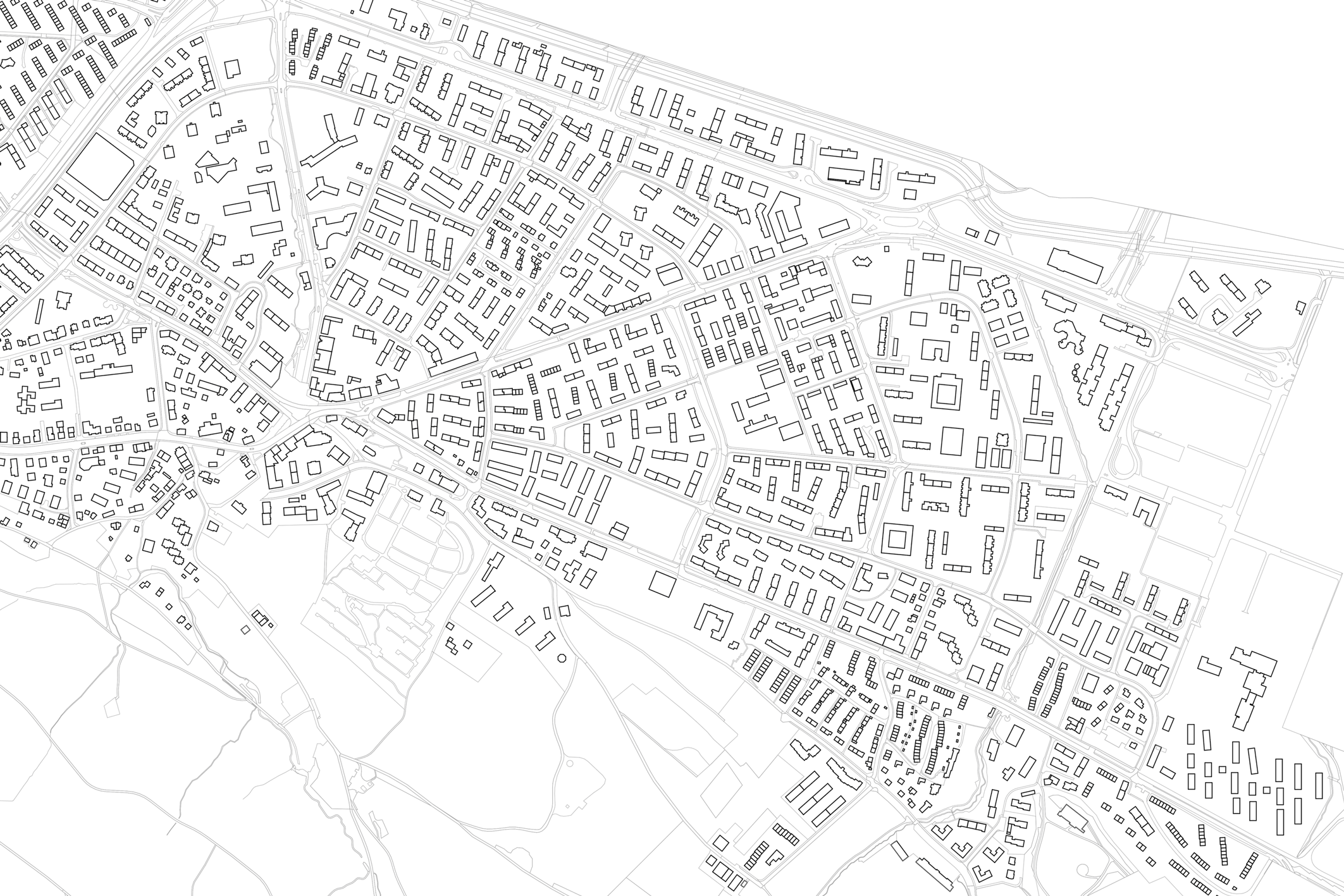AN ALTERNATIVE TO DEMOLITION
A CRITICAL MANIFESTO, 2023

The garden city in Zurich-Schwamendingen is undergoing a profound transformation. Buildings from the 1950s or even the 2000s are being demolished to make way for replacement housing developments. The pressure for inner densification is increasing. Zurich must become denser. Around 520,000 inhabitants could live in Zurich by 2040. The population of large cities has only been growing again for a few years. At the end of the 1990s, the core cities were made more liveable again through the expansion of public transport, more space for pedestrians and bicycles thanks to the taming of motorised private transport and the targeted promotion of housing for families.
This structural change is done by replacement construction. Schwamendingen is being transformed from plot to plot, from competition to competition. Step by step, the morphology of the city has been reshaped. For a long time, this development was greeted almost euphorically. The result was a wealth of new types of housing and settlements in various competitions in the city of Zurich. The so called „Grundrisslabor Zürich“ attracted a great deal of attention beyond the boundaries of the local scene and reached its peak in the publication "Grundrissfibel - 50 Wettbewerbe im gemeinnützigen Wohnungsbau 1999 - 2012".
However, buildings are often demolished long before they reach the end of their expected life or require extensive renovation. In practice, transformation, additions or extensions to existing structures are usually not seriously considered. The concerns are too great, the fear of supposedly higher construction costs and loss of comfort too great.
Only over the years did it become apparent that the inhabitants of the old buildings disappeared along with them, and that it was mainly a younger and well-educated public that moved into the more expensive new flats.
The morphological transformation of Schwamendingen is also a social transformation. The replacement building displaces building mass, the replacement building displaces residents, the replacement building erases memories.
A glance at the map of Schwamendingen with the planned or already built replacement buildings gives an idea of the extent of the transformation.
Under the imperative of inner densification, it is not only the cityscape that is being changed: Valuable building fabric, traces of cultural memories, life stories, affordable housing and large amounts of grey energy are being destroyed. It is becoming more and more difficult to build truly low-cost housing. Faced with a social and climate crisis, a critical examination of the status quo and the common practice of architectural competitions and the resulting replacement construction is necessary. Aren't there sensible alternatives to the tabula rasa? Can't we use the structure that is already there for longer?
Almost 25% of the Garden City has already been converted. Nearly 25% of the residents have already been displaced. Nearly 25% of the neighbourhood structure has disappeared. Nearly 25% of the resources and stored grey energy have been demolished.
New ideas are sought for the remaining 75% - a design laboratory for an alternative to new replacement construction. Additions, extensions, conversions, transformations and utopias are in demand.

The competition entry "Tangram - Transformation statt Totalersatz“ for the Luchswiese urban housing estate in Zurich Schwamendingen is intended to show an alternative to current practice.
This may still seem utopian and naïve.
Sources:
Siedlungsbiografien entwerfen. Transformation statt Totalersatz. ZHAW Institut Konstruktives Entwerfen
Grundrissfibel – 50 Wettbewerbe im gemeinnützigen Wohnungsbau 1999 - 2012
Stadt Zürich Amt für Hochbauten – Hochparterre
Hochparterre Wettbewerbe, Jahrgang 50, Heft 4, Oktober 2022
Die Architektur der Stadt, Aldo Rossi, 1966
Ausstellung „Verdichtung oder Verdrängung?“, ZAZ Bellerive Zentrum für Architektur Zürich, 2023
Die Neue Krise der Städte – Zur Wohnungsfrage im 21. Jahrhundert, Ernst Hubel, Rotpunktverlag, 2020
Der kleinstmögliche Eingriff, Lucius Burckhardt, Martin Schmitz Verlag

